
Some fish are named for their shape, others for the place where they live and others, as in this case, for the way they hunt. Today we are going to talk about archer fish. It belongs to the genus toxotes and there are seven species among which we see toxotes jaculatrix, toxotex chatareus, or toxotes blythii. Their peculiar way of hunting was described in 1767 by a scientist named Pallas.
In this article we will describe the archer fish species jaculatrix toxotes. Do you want to know everything about this fish and its way of life?
Key features
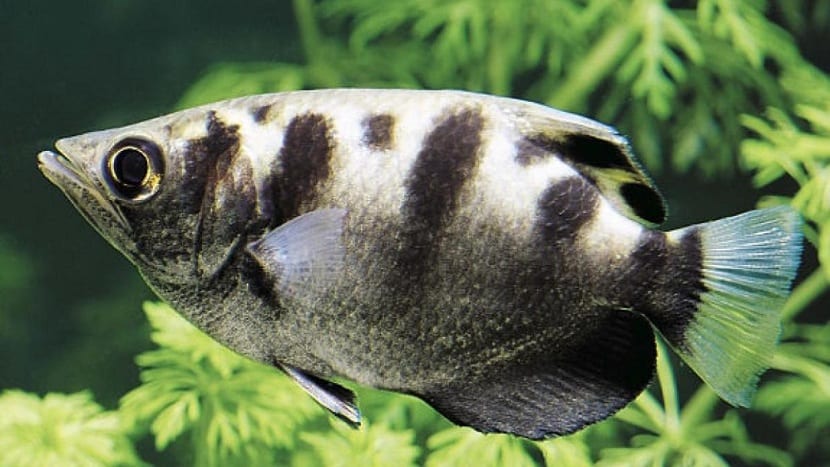
Its common name, archer fish, refers to to the mythological archer Sagittarius. It has been given this name for its peculiar way of hunting that we will see later. It has some popularity as an aquarium fish, but it is very difficult to care for. It is a species that serves as a challenge to all those who have great experience with aquariums.
His body is quite deep and his head is tilted. The muzzle is V-shaped and has some markings. Its eyes are large and capable of adapting for vision that gives it the ability to see when there is prey on it. This way you can react in time and hit her.
When this fish is in aquariums, it usually reaches a length of 15 centimeters. In the wild Lengths of up to 30 cm have been recorded. The vast majority have a shiny silver color or more on the white side with some vertical black bands.
Apart from the black bands they have a golden tint that runs all over their back. The bands take a triangular shape when they are in the middle of the fish on the sides. Under his body he has no marks. The outer edges of the anal and dorsal fin are black. Your life expectancy in good condition amounts to 10 years.
The youngest specimens can be seen with the naked eye as they have some irregular yellow patches. They have a more flattened and elongated body with a more pointed head.
Habitat and area of distribution
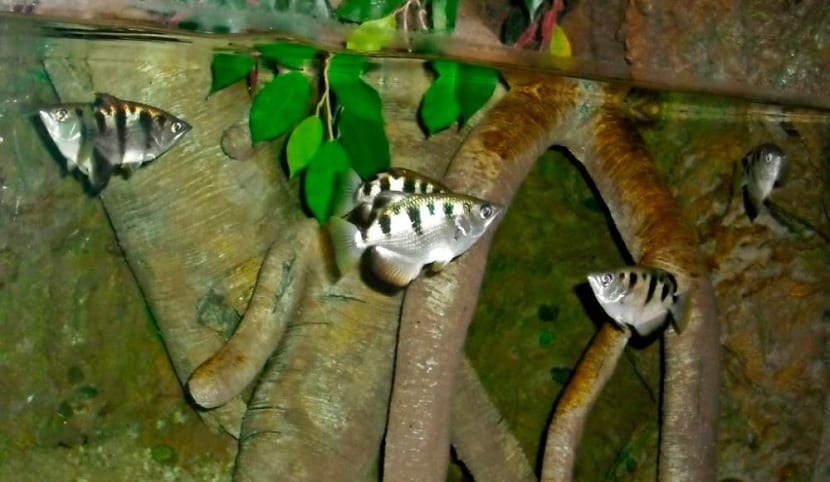
The archer fish is a species of saltwater fish and can be found in Tropical Asia and Australia, mainly. The areas where there is more abundance are in towns such as Papua, New Guinea and northern Australia. Their habitat is the salty mangroves through which they spend time crossing the reefs in search of food. The older ones are solitary species that travel to coral reefs, while the youngest move to rivers and streams.
They develop in estuaries and saline waters between the mangroves. They are capable of migrating to fresh waters as well in case of food shortage.
To keep it in an aquarium, one of no more than 500 liters is required. However it is a independent fish and even somewhat aggressive It is recommended to have it with fish of the same species of the toxote family because they require the same parameters.
Archerfish come from areas where salinity, hardness and pH vary throughout the day as a result of the tides. Therefore the waters have to be very hard with PH hovering around 8º. Never keep it in soft water. It supports high temperatures well. Keep between 24 and 28ºC.
Being a very swimming species we must make sure to leave enough space for it. The filter must be oversized to avoid ammonia toxicity which becomes more toxic as the hardness and PH of the water increases. It is important to have the same aquatic conditions of their habitat to avoid diseases and infections.
Behavior of the jaculatrix toxotes
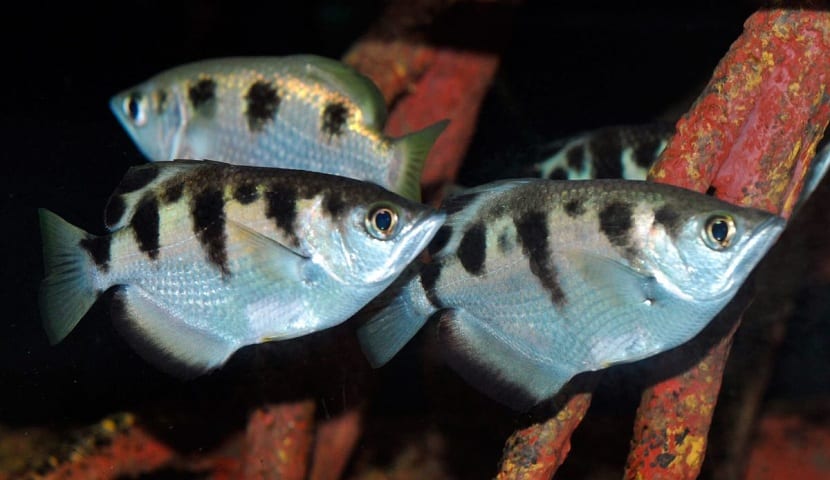
For them to live properly, there must be at least four specimens in the aquarium. They can be aggressive towards fish of the same class if they are of different sizes. The best way to avoid this situation is to buy all the fish of the same size.
It is necessary that the aquarium water be brackish. It is advisable not to introduce them with other species de peces more competitive or territorial, since they would sow chaos. Other brackish fish such as Four Eye Fish, Mudskippers or Large Mollys can make good tank companions, as can Monkeys, Scats, and Puffs.
Archerfish feeding
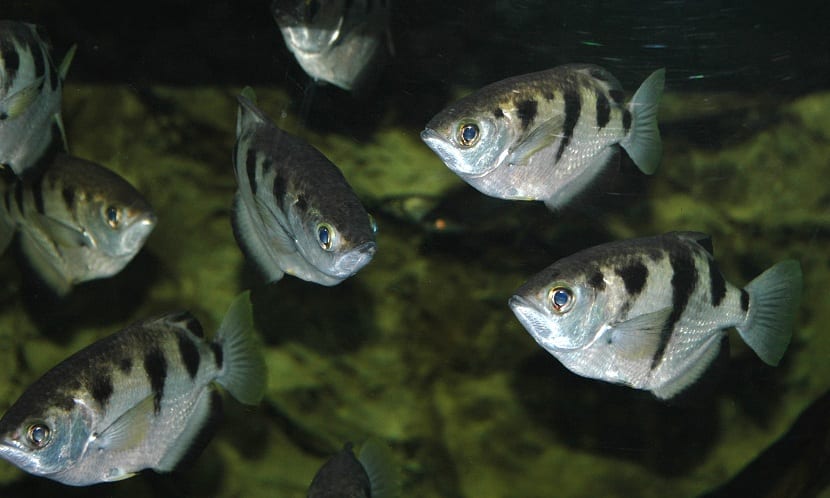
The archerfish's diet is primarily carnivorous. They generally feed on insects and spiders that are capable of hunting on the surface of the water. We will see the peculiar way of hunting in the next section. It can also feed on other small fish and crustaceans.
If this species is cared for in captivity in an aquarium, they will prefer live invertebrates, small live insects and small fish.
Way of hunting
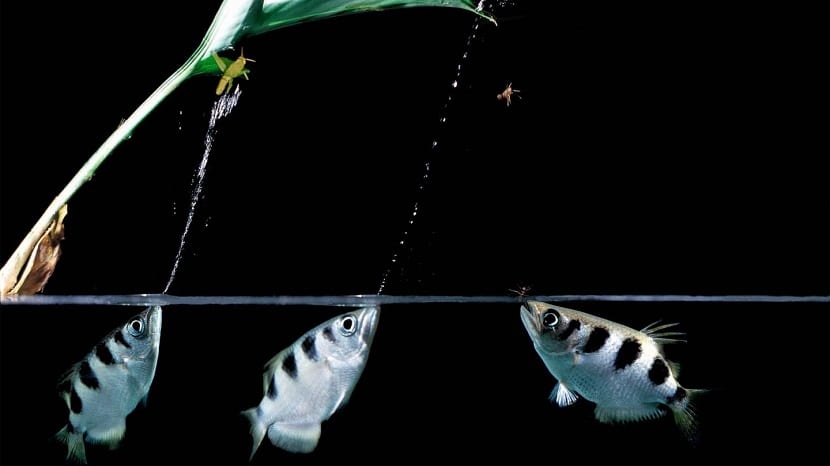
Since we have begun to describe the archer fish, we have mentioned that it has a peculiar way of hunting. It is a way that this fish has developed to hunt. And is that is capable of shooting a jet of pressurized water at its prey through a groove in the roof of their mouths. The jet of water comes out with great force. It is capable of hitting insects and spiders that are perched on the lower branches near water. Once they fall to the surface of the water, they are quickly eaten.
It seems as if the archer fish, over the years, has learned to know exactly where the prey is going to fall. They are tremendously fast when it comes to devouring their prey.
To shoot the water jet, you need to raise your tongue against the roof of your mouth. In this way you can shape the jet into a tube and the cover closes quickly to give it strength. Most archer fish they are capable of shooting up to distances of 1,5 meters. Some wild specimens, whose length is greater, have been seen launching up to 3 meters away.
Once the prey is knocked down by the shot, the archer fish swims at high speed to the landing site. They reach their prey in just 100 milliseconds. There are some studies carried out on the archer fish and its great shot. Hundreds have been analyzed de peces and it has been concluded that they could be trained to hit moving objects. The ability to hit moving targets is a slowly learned behavior.
Reproduction
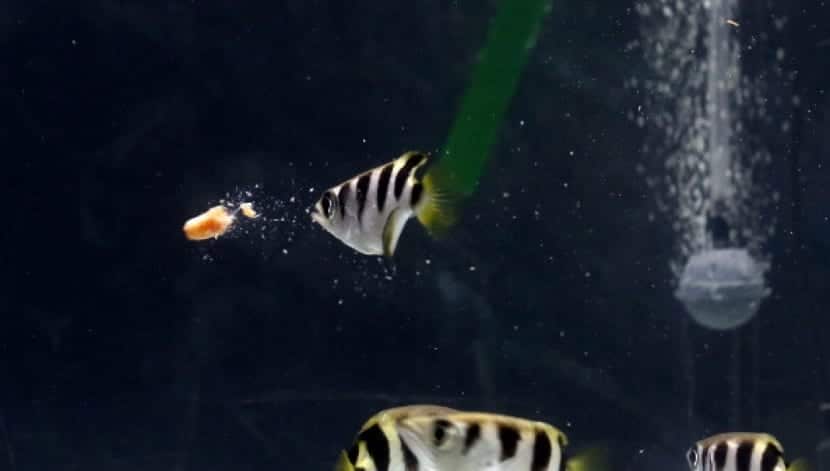
It is difficult to differentiate the sex between male and female. Its reproduction in captivity is very difficult. It is necessary to have them in very large groups if you want to breed. There is no way to force them to reproduce, but you have to let it happen on its own. Until today, they have only reproduced a few times in aquariums and by accident.
When the female is fertilized almost 3.000 eggs are released and remain floating to have better hatching chances. When this happens, it is advisable to move them to another tank until the eggs hatch. They only take about 12 hours. The fry eat the insects and flake foods that are floating around. It is better not to give them food that is not alive, so that they do not get used to it when they grow up.
This fish is very famous and difficult to care for, but if you are an aquarium expert, it is quite a challenge.